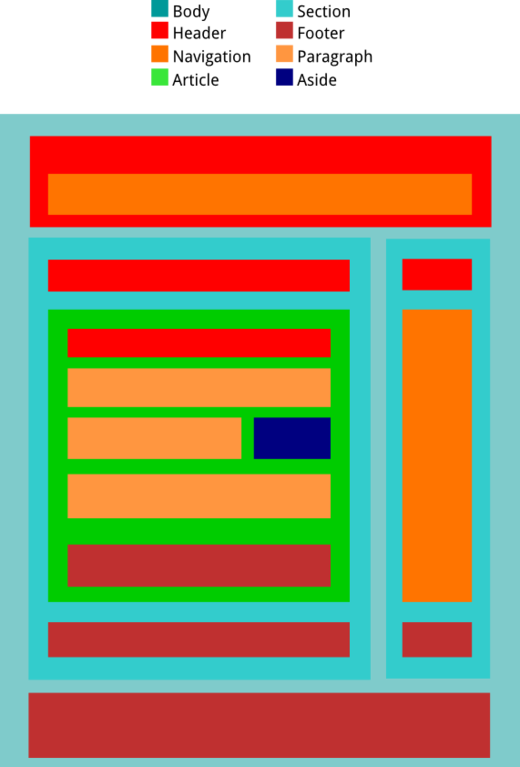Block Elements
There are several primary block elements used in HTML5. We will look at some new and old tags that complement the <head> and <body> duo.
- <header>
- <nav>
- <article>
- <aside>
- <footer>
- <blockquote>
<header>
The <header> tag is a container for introductory materials in a document or section. <header> can be used multiple times in a document and usually contains at least one <h1>-<h6> element (in order to validate).
<header>
<h1>Section/Document Header</h1>
<p>A brief description of this section/document</p>
</header>
Further reading:
- HTML5 Doctor: The <header> Element
- w3schools: HTML5 <header>
<nav>
The <nav> tag is used to demarcate a section containing navigation anchors (links) to other content or sections. The anchors can be nested within a list such as an unordered list <ul>.
<nav>
<h1>Navigation</h1>
<ul>
<li><a href="#home">Home</a></li>
<li><a href="#contact">Contact Us</a></li>
</ul>
</nav>
Further reading:
- w3schools: HTML5 <nav>
- HTML5 Doctor: <nav>
- w3c: <nav> Specification
<blockquote>
The <blockquote> tag is used to indicate a quotation or citation. The cite attribute is used within a <blockquote> tag to reference the origin of the quote.
<blockquote cite="Caleb">on the last element you listed 'bockquote', should be
blockquote</blockquote>
Further reading:
- w3c: The blockquote element
- w3schools: HTML5 blockquote tag
Task
- Put together a news article using each of the above tags and any tags described in previous tasks.
- Post a link to your news article in the discussion area below.
- Be sure to review each others' news articles and comment on techniques and content as desired :-)
Hint: Use the following diagram as an example of how block elements are nested.
Note: CSS is required to obtain the layout in the following diagram.



